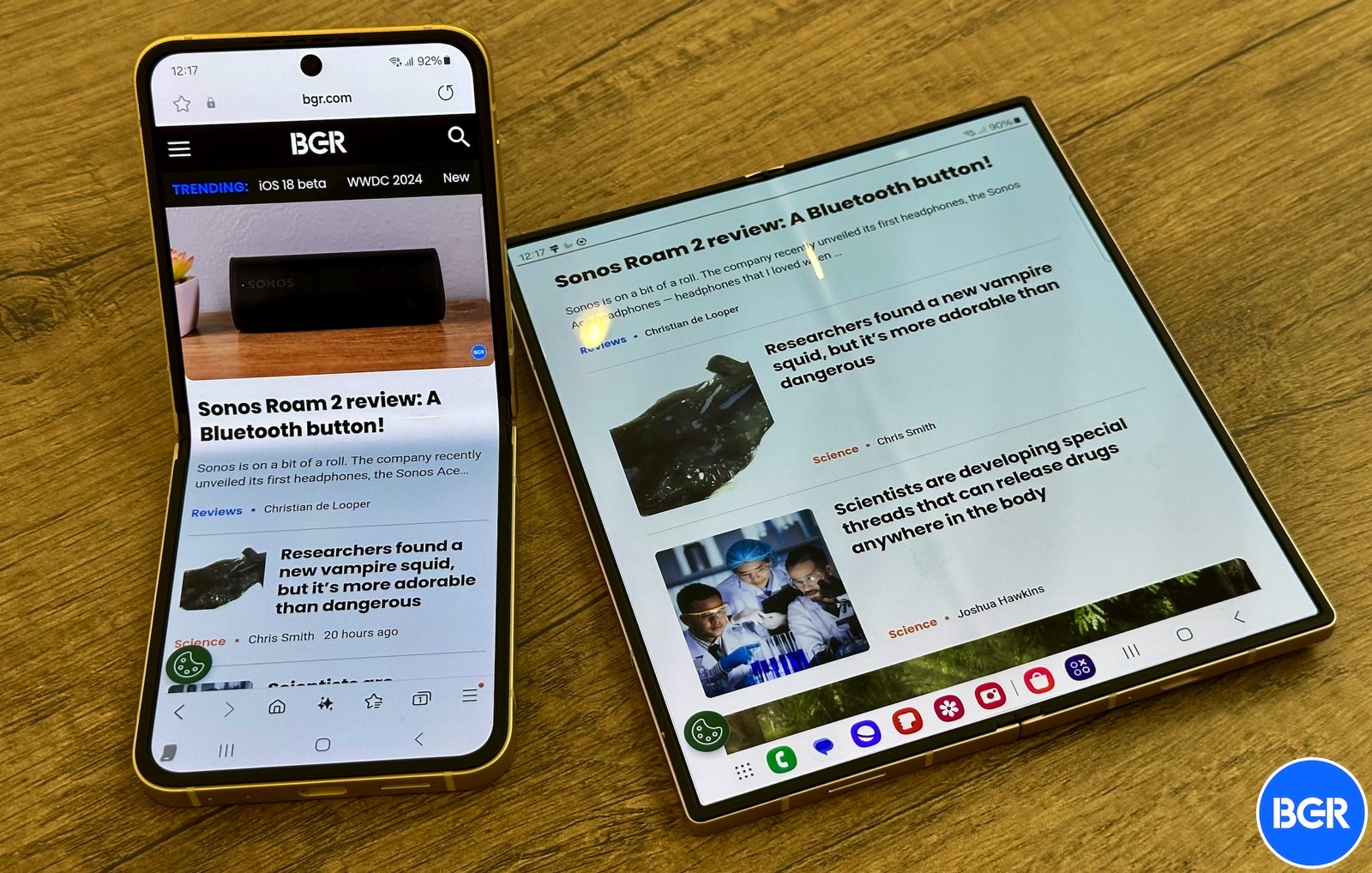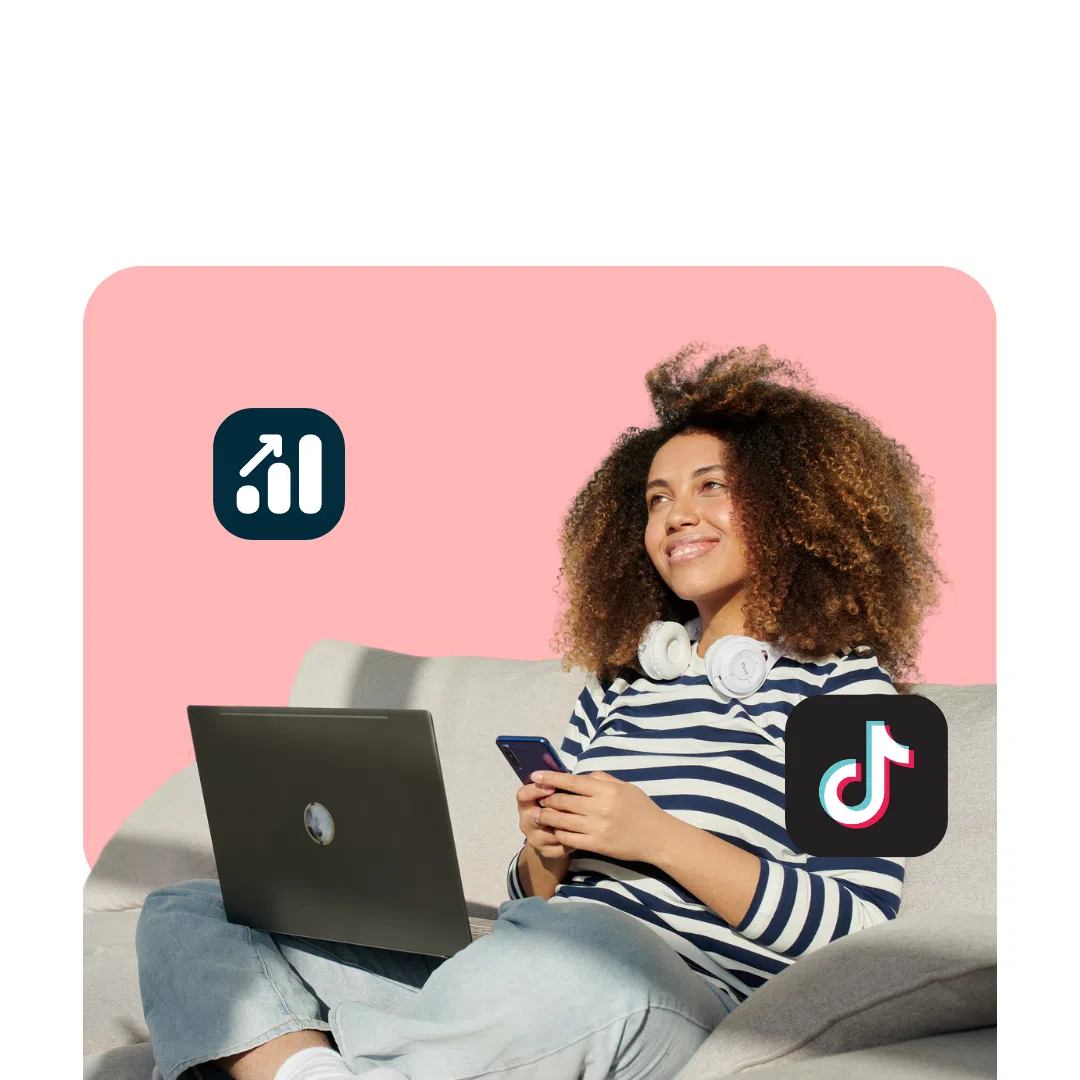Lead generation ads are one of my favorite formats across all paid media channels. I’ve been using them ever since they launched and have seen great results for all kinds of businesses.
A common struggle I hear is that people can set up and launch Facebook lead generation campaigns, but they’re unsure how to optimize them afterward. While every business is different, you likely fit into one of two categories when trying to optimize your Facebook lead ads. You either want more leads or higher lead quality.
In this article, I’ll talk about strategies that can help you achieve whatever you’re interested in, as well as some best practices for everyone to pay attention to.
Contents
How to optimize Facebook lead ads
Use these four Facebook lead ad optimization strategies to help your business source more high-quality leads from the Meta Ads platform.
1. Focus on your ad text and creative
Before we get to the form itself, your Facebook lead ad copy and creative are an important starting place. This is the impression you’re going to make on your audience, and it needs to align with your optimization goal.
Facebook lead ad copy and creative tips for everyone
- Use highly engaging visuals: This could be for static images, carousels, or video. Make sure you’re standing out from the crowd.
- Make the most of your copy: Use emojis or numbers in text to stand out.
- Test different text lengths: All industries and customer personas are different. Some want longer copy, others want something more succinct. Test different permutations and see what works best for your folks.
- Use vibrant, contrasting colors: More often than not, the ads I see work best have some sort of high contrast in the color scheme. This creates a harsh experience that can often get users to stop scrolling and see what your ad is about.
- Format creatives for each placement size: There are lots of different placements on the Meta network, and they let you upload custom creatives for each. There’s no reason you should deal with dead space around the top and bottom, or sides of your visual assets. Try using AI to create and upload images or videos that fit each dimension for each placement.
💡 Use the power of AI to optimize your Facebook lead ads with our free guide on key ways to use AI in Google and Facebook Ads!
How to adjust your Facebook assets for higher lead volume
To get more form fills, you need more people clicking on your ads. To improve click-through rate, try some of these tactics:
- Make your ads broadly appealing: Try to strike a tone of “all are welcome.”
- Change your offer: Test different things to give away. What does your audience want the most that you’re willing to “give away”? If you’re not seeing the volume you want, you might need to have something more appealing.
- Play on your audience’s emotions: If someone is going to work with you, are they happy, sad, fearful? While I would suggest you use some level of discretion so as not to be manipulative, using emotion in ads can get users to engage and convert more.
- Use social proof or industry awards: Showcase yourself through either reviews from your customers or awards you’ve won for your business. These help you differentiate yourselves from your competition and show that others think your products or services are high value.
How to optimize your Facebook ad copy and creative for better lead quality
For higher-quality leads, our tactics need to be a bit different. We still want highly attractive and engaging creatives, but there are some tweaks on the theme to attract only the right users. The biggest thing to remember with tactics to improve lead quality is that you’ll almost always see less overall lead volume, but your percentage of high-quality leads should be better, bringing up your batting average.
- Tell your audience who you’re a good fit for: Speak only to the users you want to engage with. If your product only works for certain groups of people, call that out. Have a minimum spend on our site that lower budget folks can’t afford? Make that known.
- Incorporate your ideal persona in creatives: Don’t stop at ad text. If you’re able to visually showcase your actual target audience, do that in the imagery.
- Change your offer to fit a narrower one: Move away from the “everyone is welcome” offer and promote something only a serious buyer would want.
2. Choose the right form type
Whenever you build a new lead gen form on Meta Ads, the first choice you have is what type of form you want to use. There are two choices for this: more volume and higher intent.


More volume Facebook lead ad forms
The “more volume” option is going to align perfectly with anyone trying to get a higher number of lead-gen forms submitted to their campaigns. This form, as Meta says, is quick to fill out and submit on a mobile device.
There are almost no breakpoints with these forms (the only exception would be with your question strategy, which we’ll get to in a minute). These should be free-flowing and easy to zip right through.
Higher quality Facebook lead ad forms
While the options for this form are almost identical to the more volume option, a “higher Intent” form adds a step in the form submission process that acts as a speed bump for the user.
During this review step, the user can see their information based on the answers they provided to the questions and is reminded that the information they see is going to be submitted to your business. Additionally, the user has to slide the submit arrow rather than simply clicking a Submit button. A subtle change, but a meaningful one.
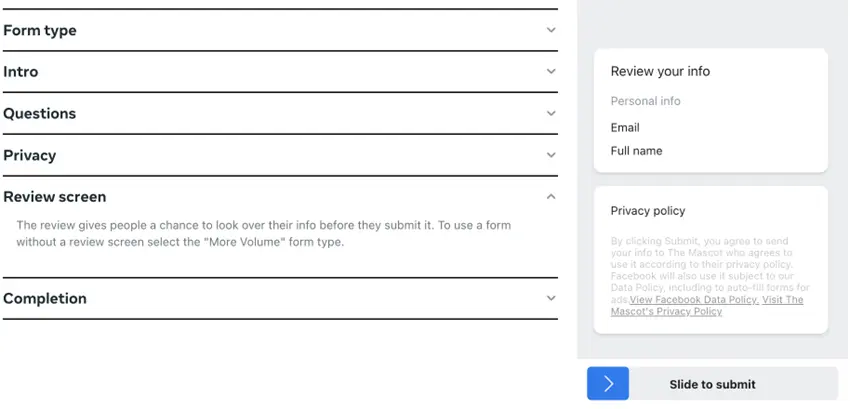

This review step, while fairly basic, does a good job of reminding the user what this form is for and scaring off users who are less serious about engaging with a company. Just like I warned above, you’ll likely see fewer form fills with a higher intent form type, but the users who do submit should be higher quality since they were given the option to back out and didn’t.
3. Create a form intro section that pops
The intro of a lead gen form gives even more text space for you to set the stage for your potential customers. Think of this greeting in much the same way you thought about the ad copy and creative itself.
🚨 Looking for more ways to improve your Facebook lead ads? Start with an instant account report using our free Facebook Ads Grader!
Facebook lead ad form greeting tips for everyone
- Using the ad image is fine: If you have the design capabilities and bandwidth and want to design new images for the forms, that’s great. They likely will perform really well. But I’ve been using the same image from the ads for a long time and haven’t seen any slowdown in performance because of it. We talk a lot about making sure your ads look their best in all placements, and this is one of them, but this is likely one of the few scenarios that you can let it slide.
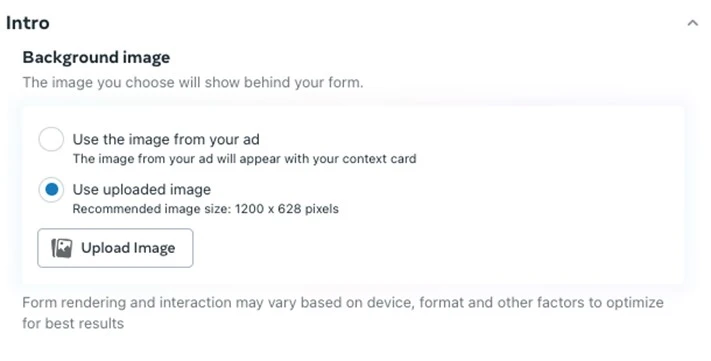

- Set the stage in the greeting: Let the user know who they’re engaging with and what they’ll receive in return once they fill out the form. This should be a continuation of the messaging in your ad creative, but you get more of an opportunity to talk to your prospective customers.
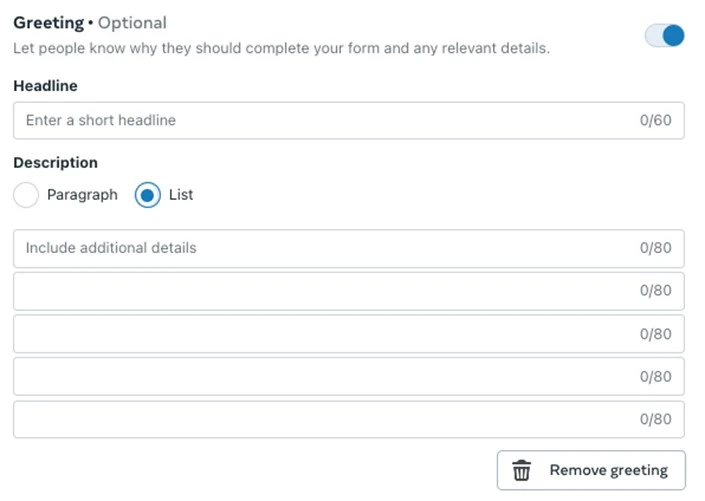

How to make your Facebook lead ad form intro appeal to more people
If you’re aiming for more volume, the best thing you can do in this section is to echo the same “all are welcome” message you used in your ad copy.
That said, if you’re really trying to limit the friction in your lead gen forms, you could test not using the greeting text at all and sticking only with the image. There’s a blue toggle in the upper right of the greeting where you can turn it off, and users will go straight from the image to the form fields.
How to make your form greeting attract more high-quality leads
To improve lead quality, I suggest you use the greeting every time and use it to further prequalify your customers. Keep adding information that will help weed out the users who are less serious and focus only on those with higher intent.
4. Consider your question strategy
Now that we’ve got the form type down, the biggest differentiator in optimizing your Facebook lead ads is going to be the questions you add to your forms. Everything matters in this section, from the types of questions you ask to the substance of them. Note: Only ask for relevant information! No matter your end goal, keep your questions focused on data points that are most important for you to know or helpful to your sales teams. Don’t get distracted.
Optimize your Facebook lead ad form questions for increased lead volume
- Focus on the prefill questions: All questions in this section will be auto-filled by Meta if it knows the information based on someone’s profile information. By using these questions, you’ll limit the work your audience has to do to fill out the form since there’s a higher likelihood of the information populating for them in the form.
- Ask fewer questions: The fewer questions you ask (or the less amount of information you ask for), the better chance you’ll see an increase in volume. Depending on your business, you might be able to get away with only a first name and phone number or a name and email. Even a form with two fields can be valuable if you have the right follow-up in place.
- Keep the information high level: Using prefill questions can help, but the less invasive you are in the form, the more likely you are to get users to fill it out. If your sales team is willing and able to get the other needed information out of the customers on the phone, then keep it simple here and let them do their thing.
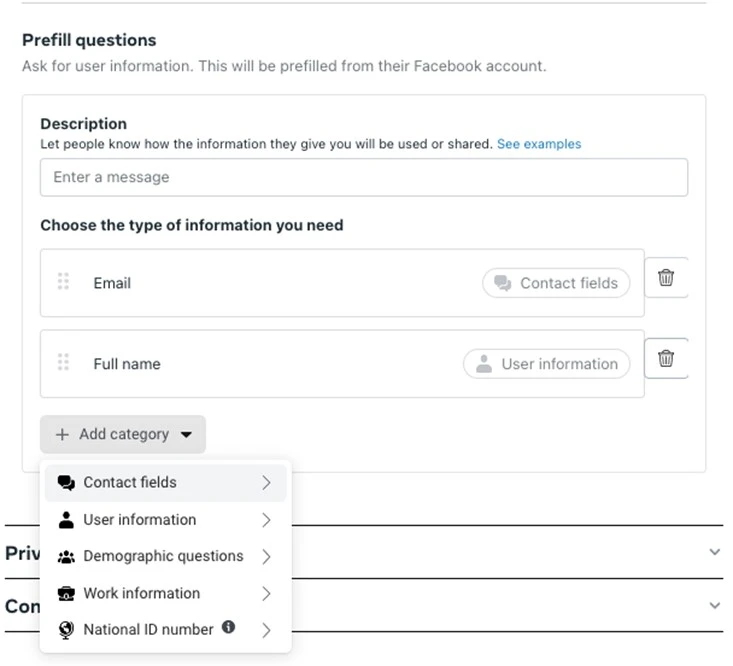

Try question strategies to get higher-quality leads
We’re gonna take pretty much everything from the “more volume” section here and turn it on its head.
- Leverage the custom questions: Make the user think about their answer and type something in, or make a choice. Everything in the questions section is going to require you to craft the question and provide the space for the answers. Or, in the case of multiple choice, you get to select the possible answers too.
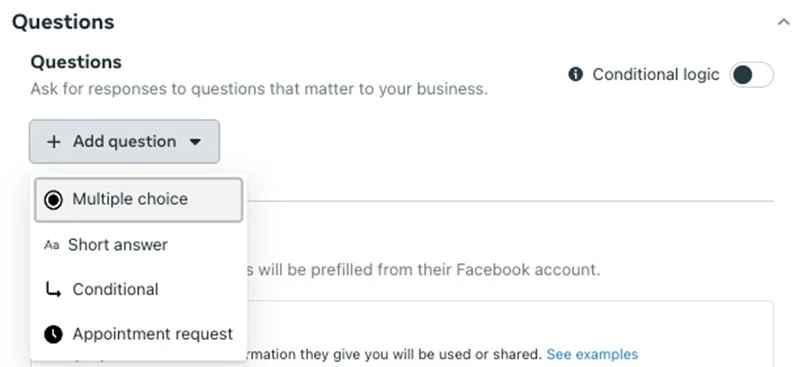

- Ask more questions: Follow the best practice of keeping all questions relevant, but ask for more in the form. Users who are less serious won’t want to take the time to answer five or more questions.
- Get the details in the form: Do the job of a salesperson. Ask about the budget, timeline, and other important details right in the form. The serious buyer knows this information is necessary for you to do your job, so they’re willing to share it.
- Leverage conditional logic: In the first image of this section, you can see there’s a toggle in the upper right for conditional logic. With this activated, you can choose how the form will react based on how the user interacts with it. You can either send them a follow-up question, complete and submit the form, or send the user to an end page and not submit the form. This lets you create an entire experience directly in the form and allows them to choose the next step.
- Give the user an out: While it might seem strange to let people opt out of submitting the form, it’s actually in your best interest. Many times, forms get opened by accident, and the user isn’t sure how they got there. In your questions, specifically multiple choice, give the option (or something similar to) “I’m not interested,” then send the user to an end screen. They’re let off the hook in a nice way, and your sales team isn’t reaching out to folks who don’t want to talk to them.
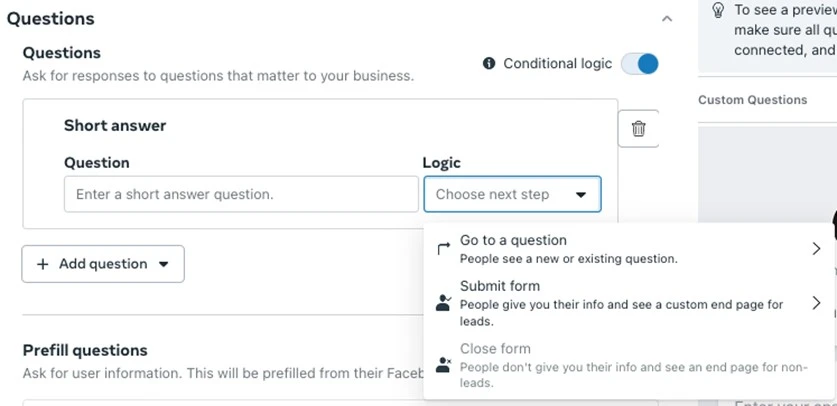

Have a solid follow-up plan
Your job isn’t finished once you receive someone’s form. It’s on your nurture sequences and sales team to close the leads that are coming through from your campaigns. For this stage, we don’t really have any different strategies for volume or quality plays, but here are some overall best practices that you should be doing when you generate leads through Meta Ads.
- Offer a timely follow-up: As crazy as it sounds, if you’re not following up with your lead gen form submissions within about 24-48 hours, they’re likely going to forget they interacted with you in the first place. Be sure to reach out as soon as possible to keep the user engaged with your company, whether it’s through an email nurture sequence or a sales call follow-up.
- Make the next step logical and meaningful: Speaking of that next step, make sure it’s the right fit for your initial call to action. Someone who downloaded an infographic likely doesn’t want to talk to a salesperson right away. On the flip side, someone who opted for a demo likely doesn’t want to get tons of content from you right away. Use your follow-up to further the conversation with the potential customer in a logical way; don’t jump around the funnel too much.
- Remove users after a period of time: Regardless of how interested they were when they filled out the form, there are going to be people who simply don’t want to engage anymore for one reason or another. Set up safeguards to remove people from sales call sheets and email nurtures after a certain amount of time with no activity. It’ll save your team’s time and not leave a bad taste in the potential customer’s mouth.
Optimizing your Facebook lead ads can be easier than you think
No matter what your goals are, there are plenty of strategies you can use to improve the performance of your lead generation campaigns on Meta Ads. Start with the creative and work your way through the form stages to make sure you’re setting your campaigns up for success to drive more volume or higher-quality leads. For more help optimizing your Facebook lead ads, see how our solutions can maximize your chances to find, convert, and keep more leads with social ads.


